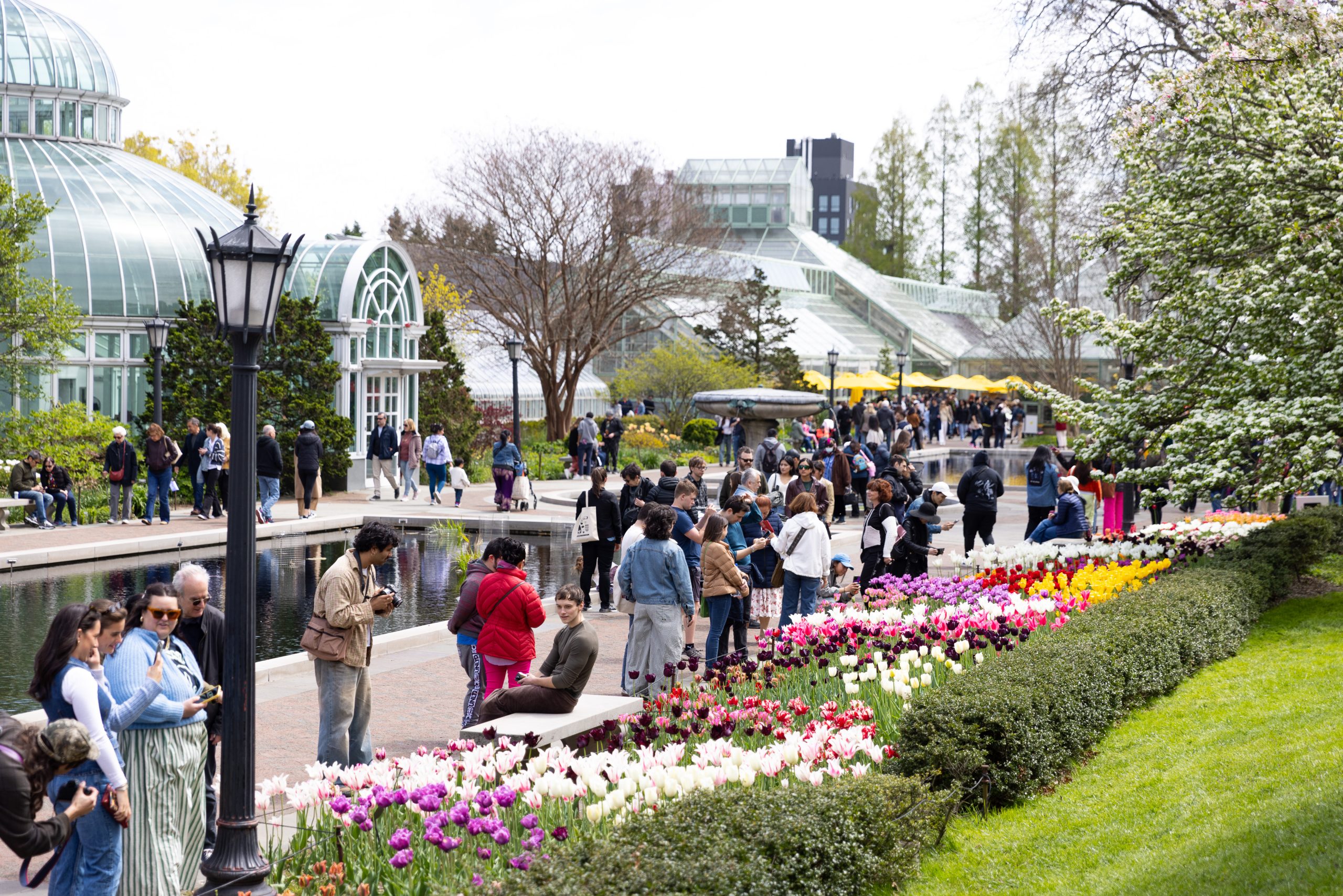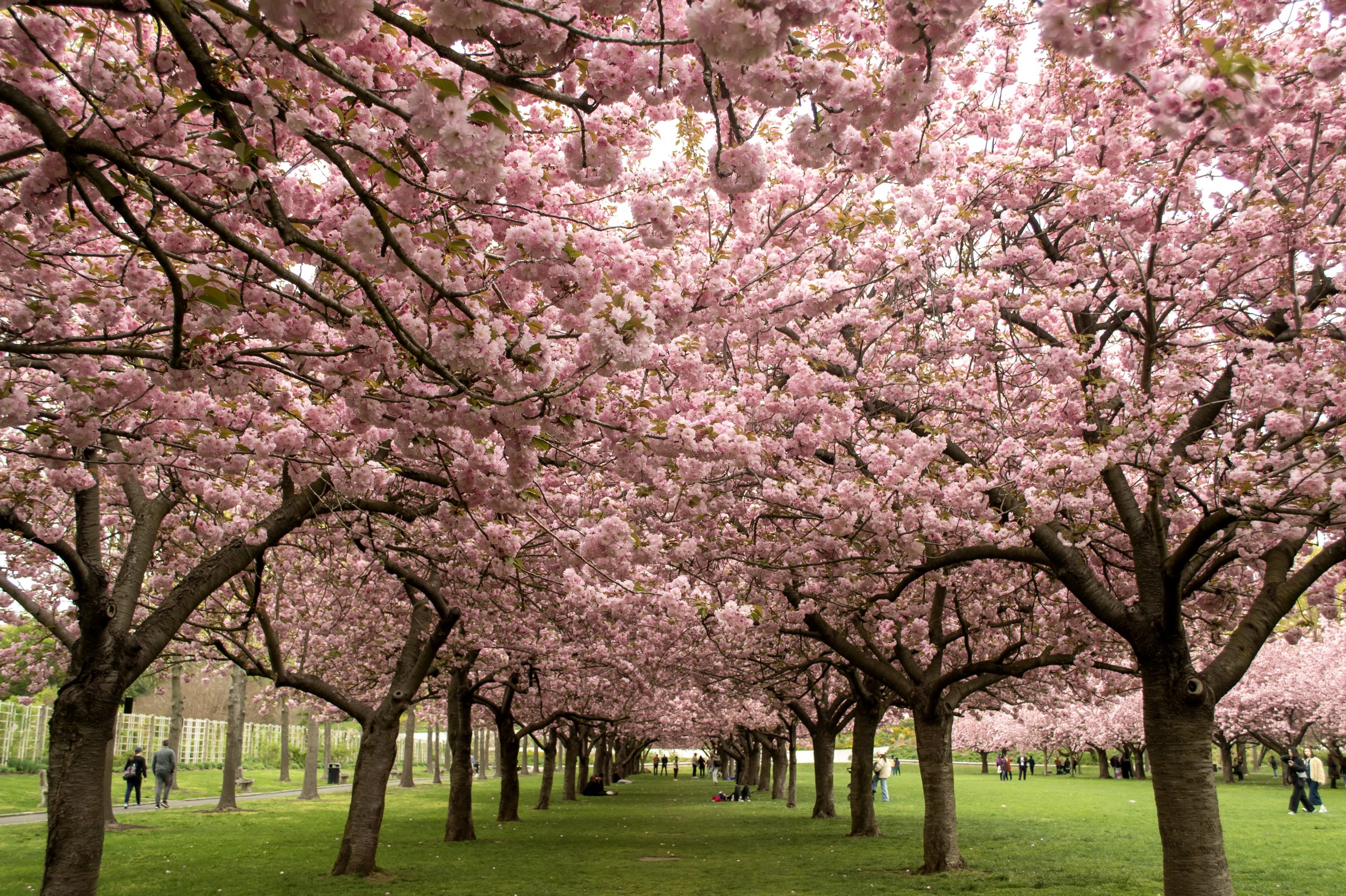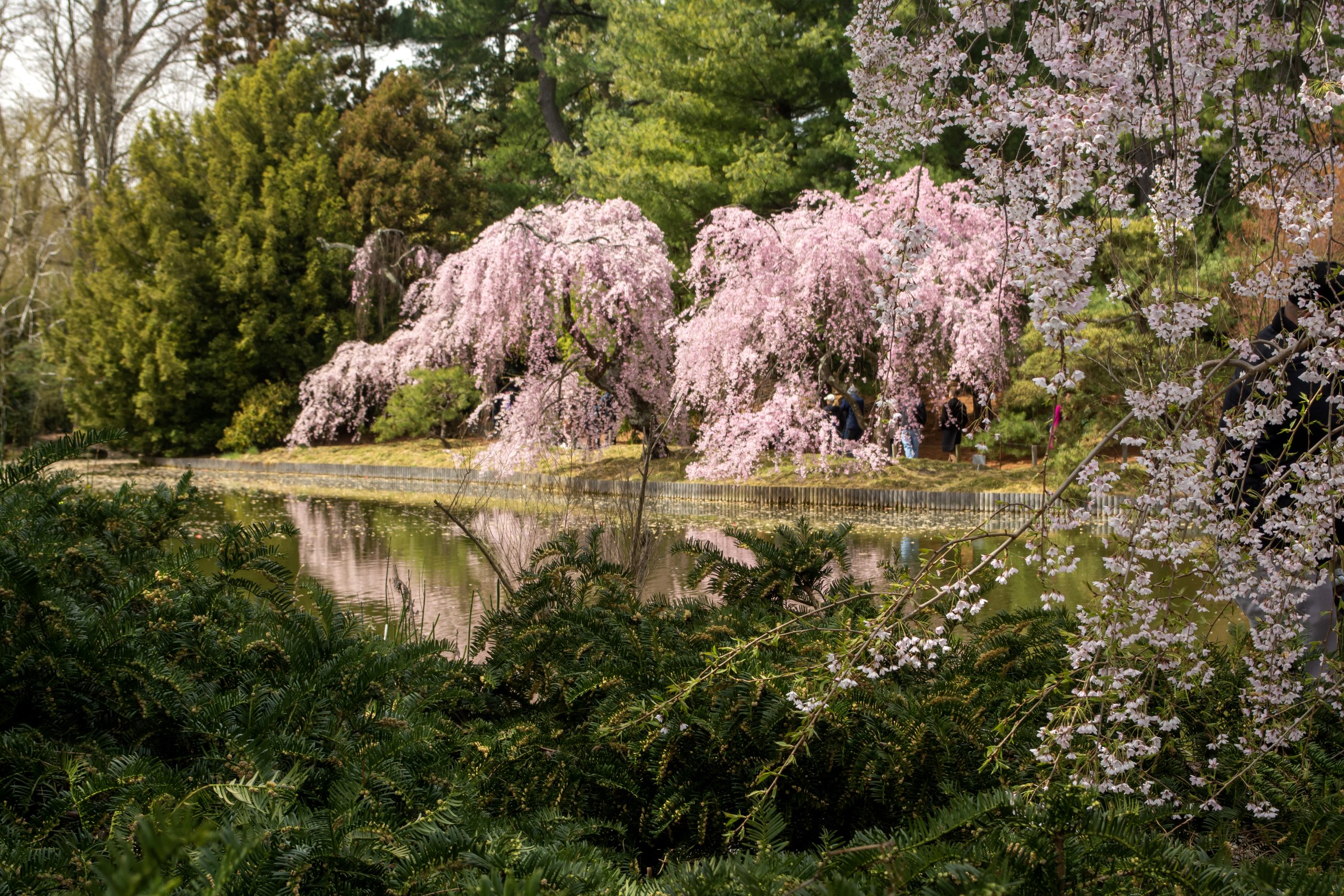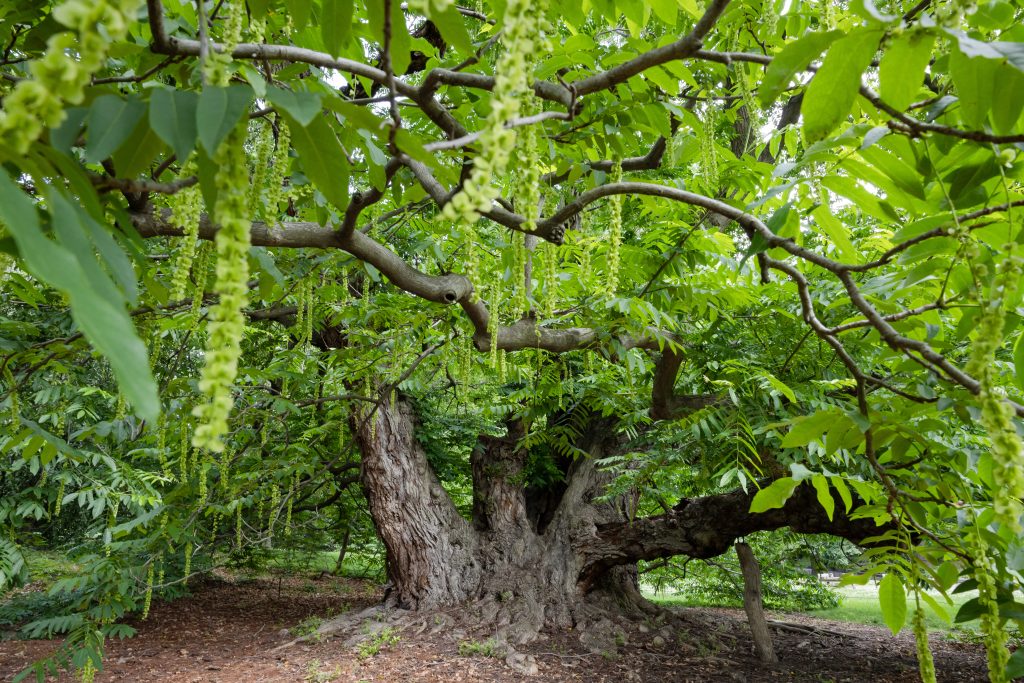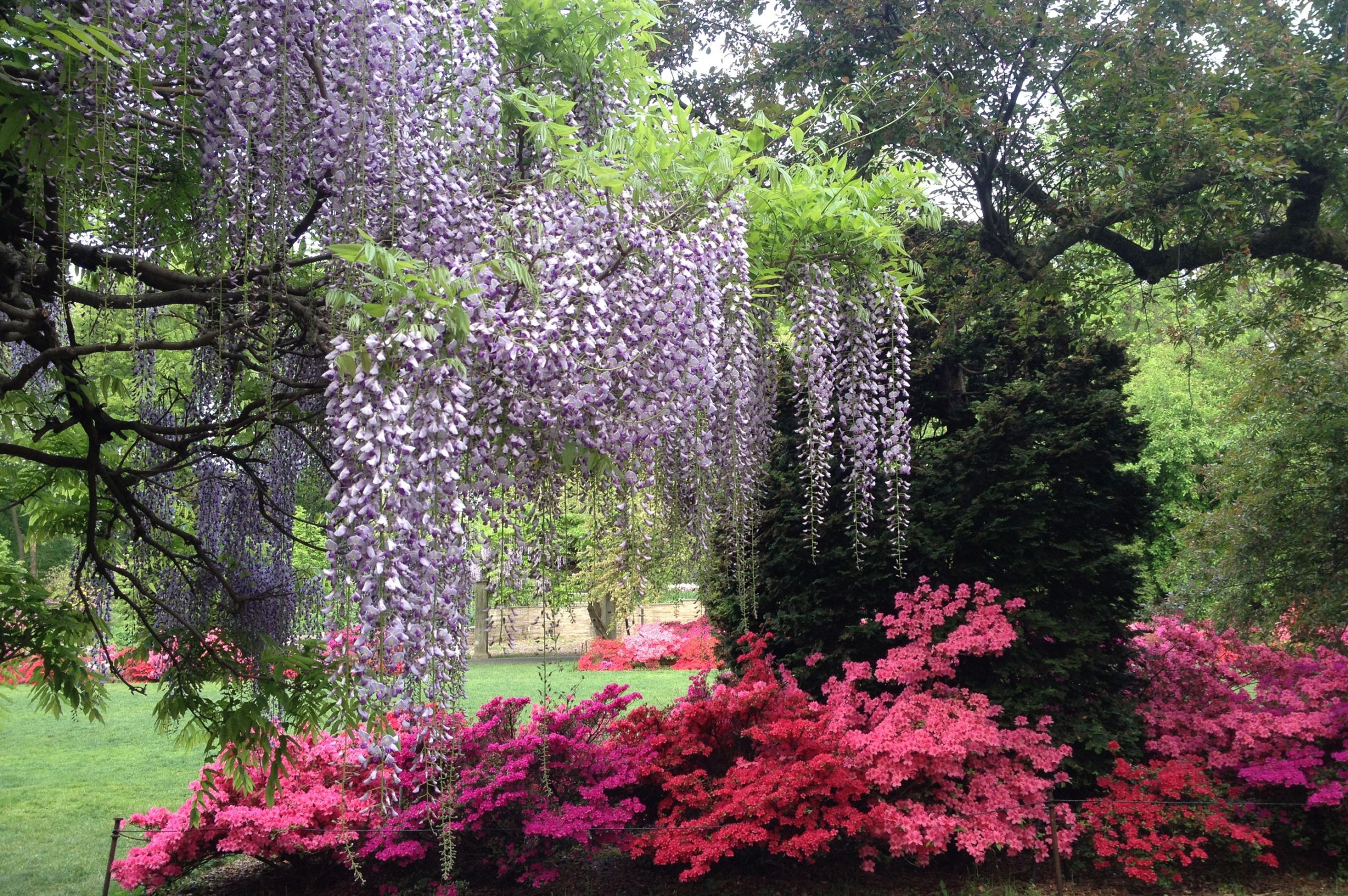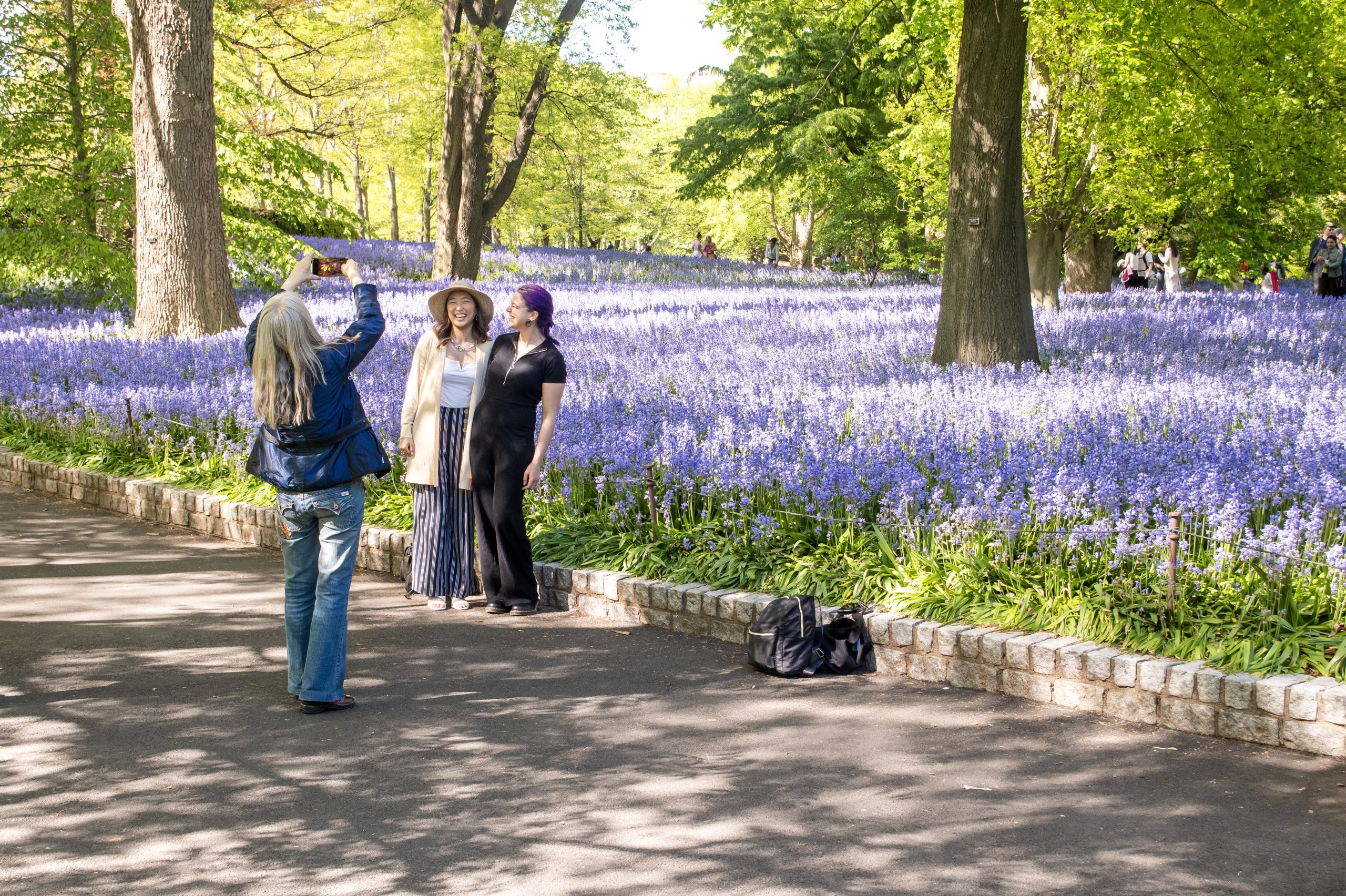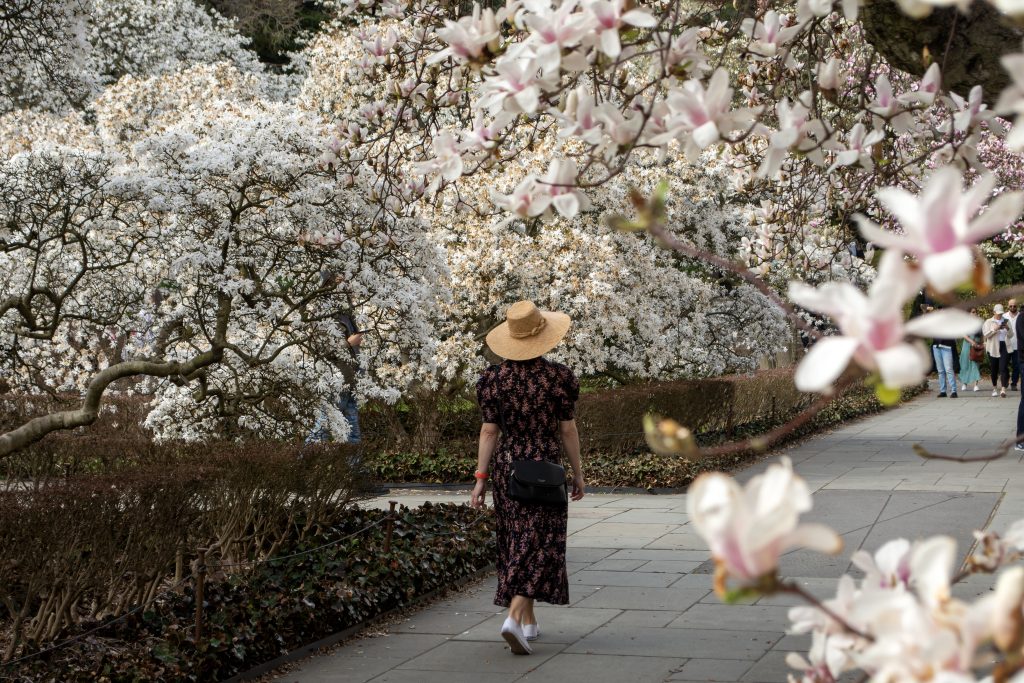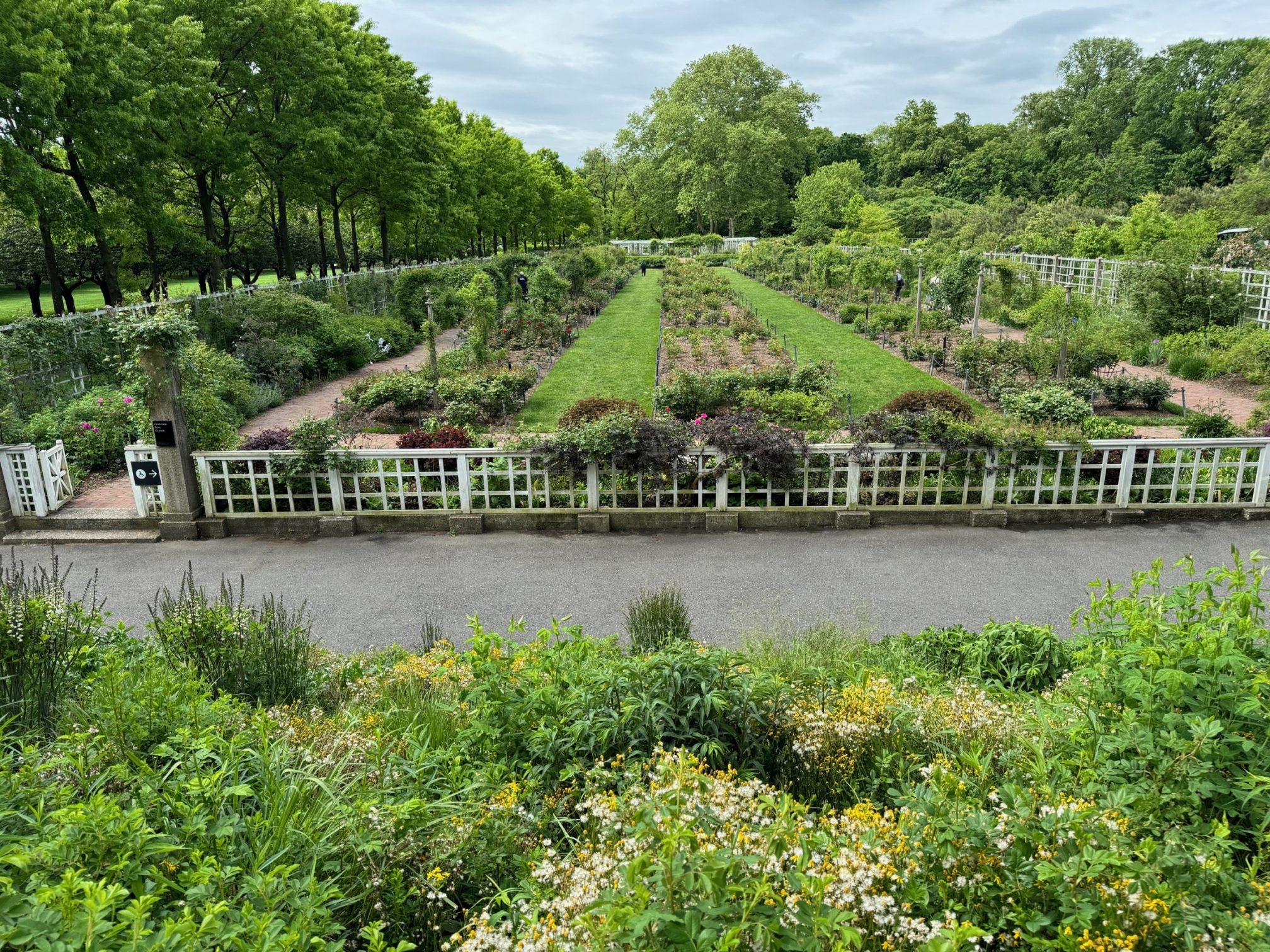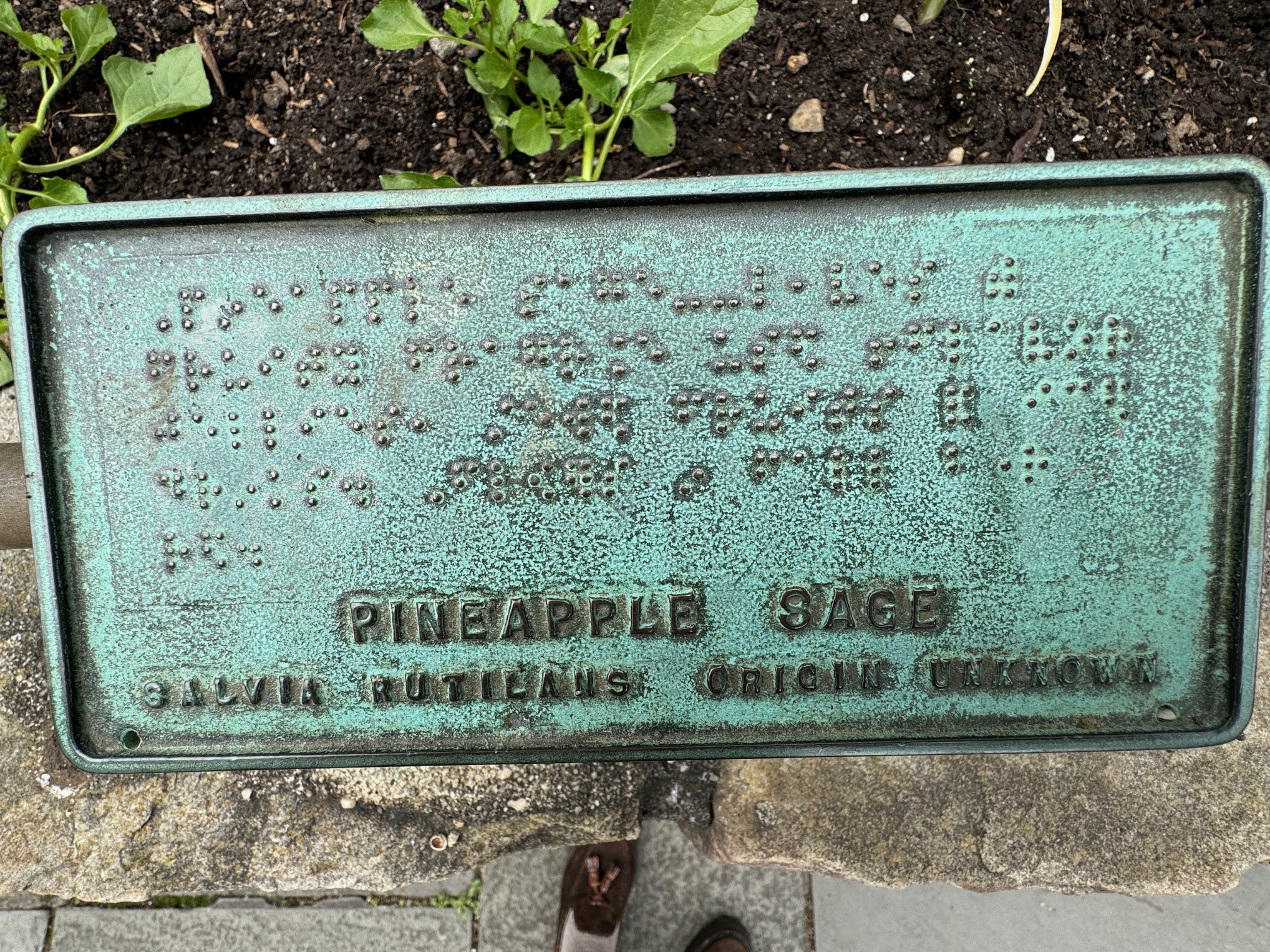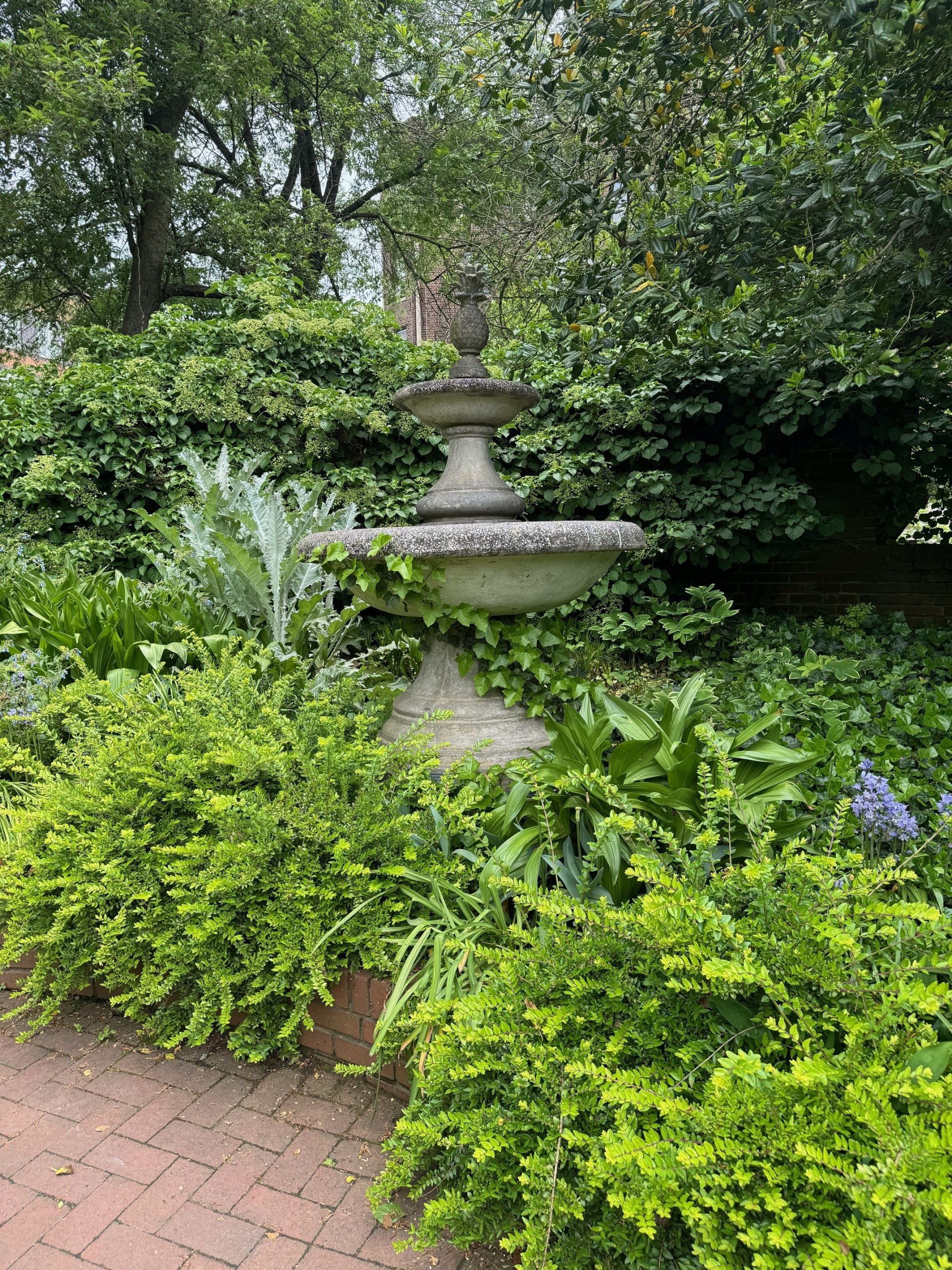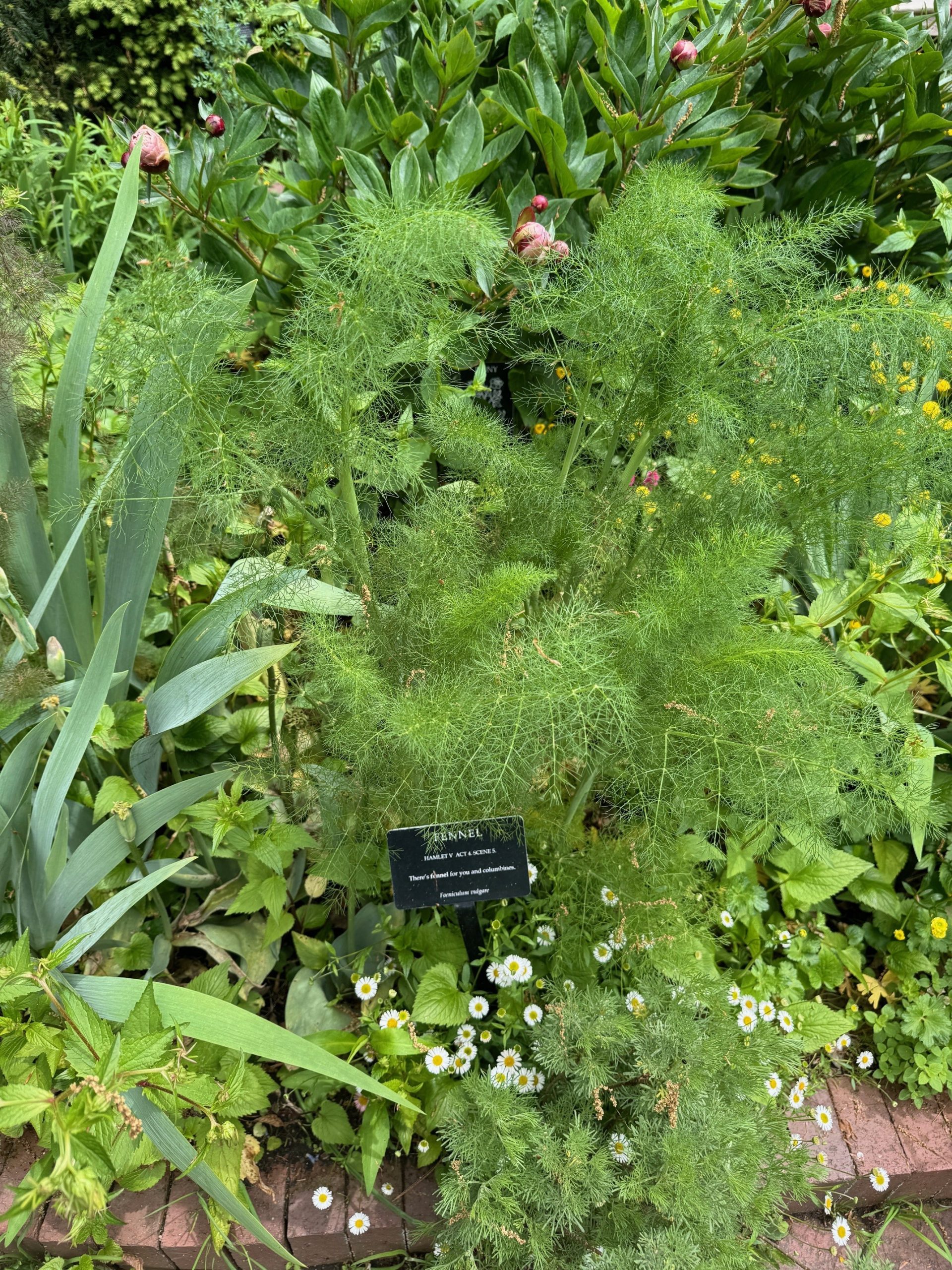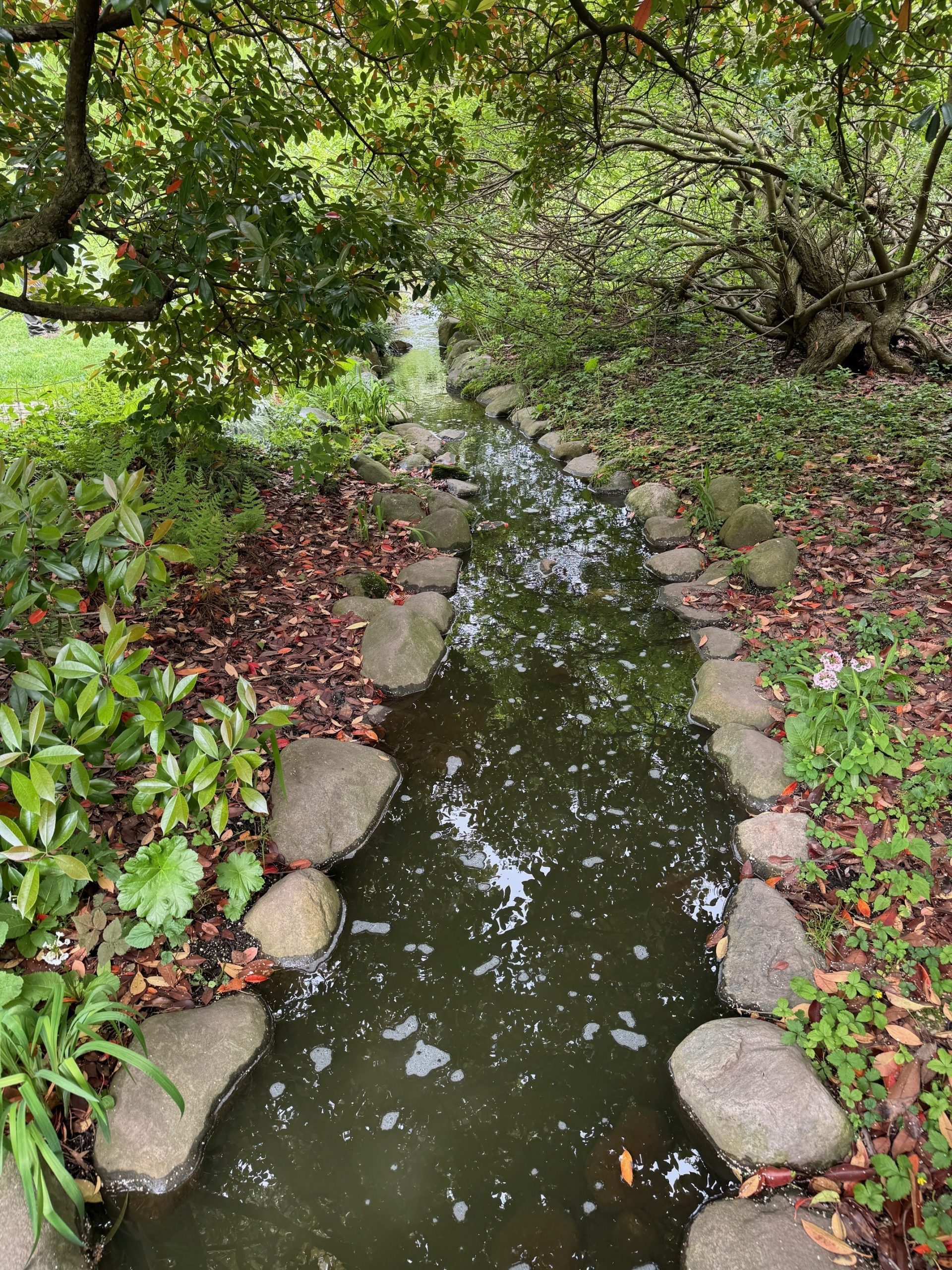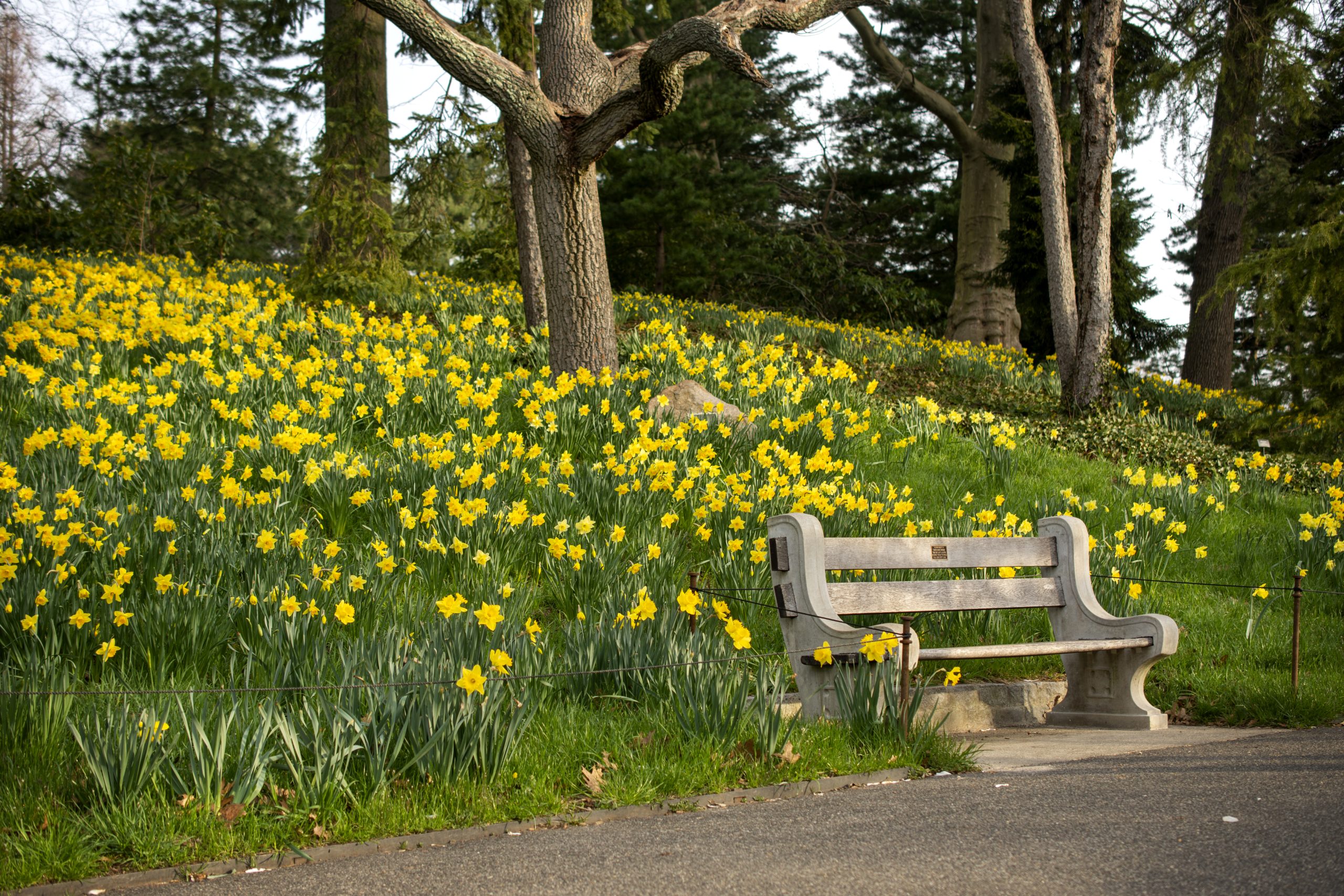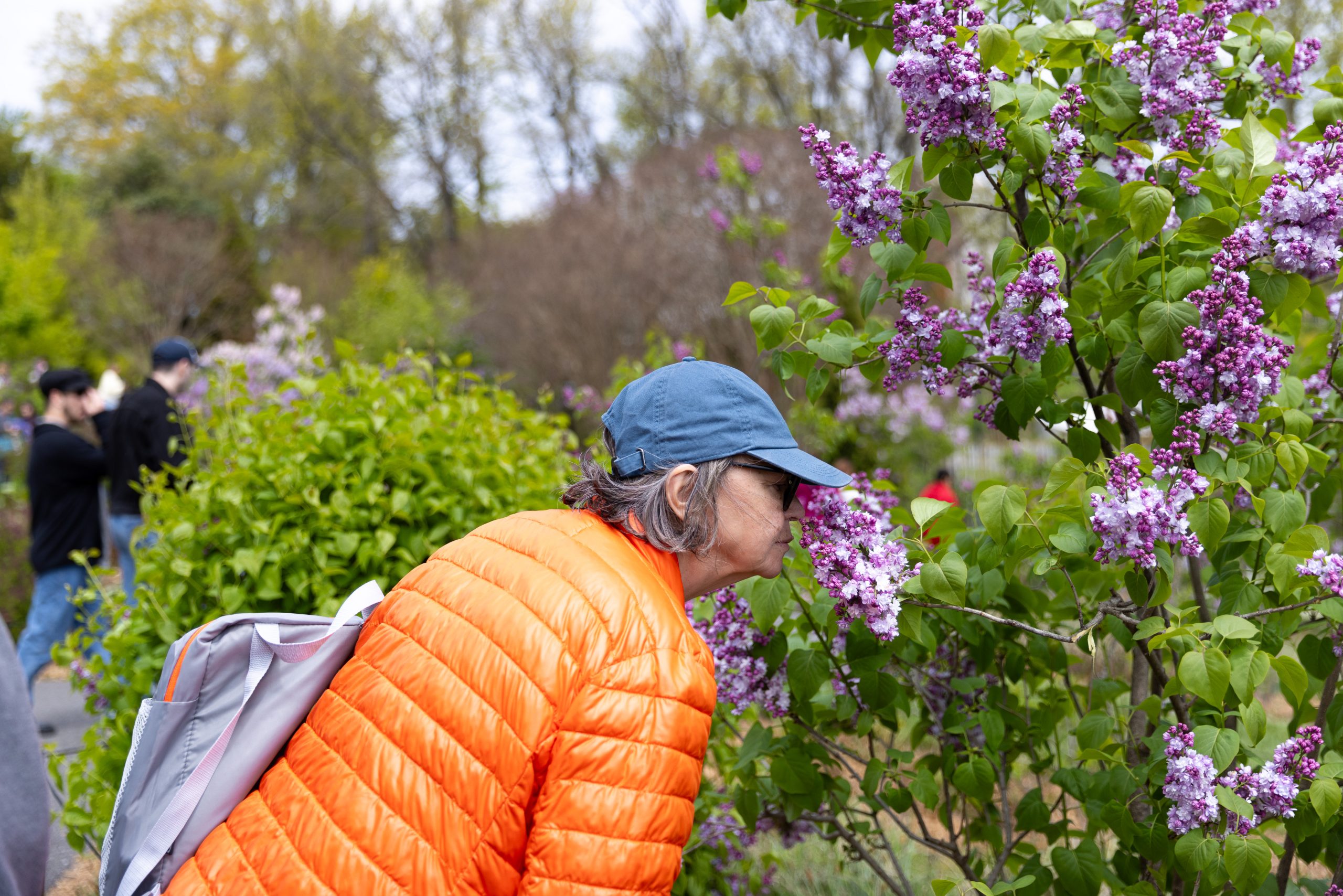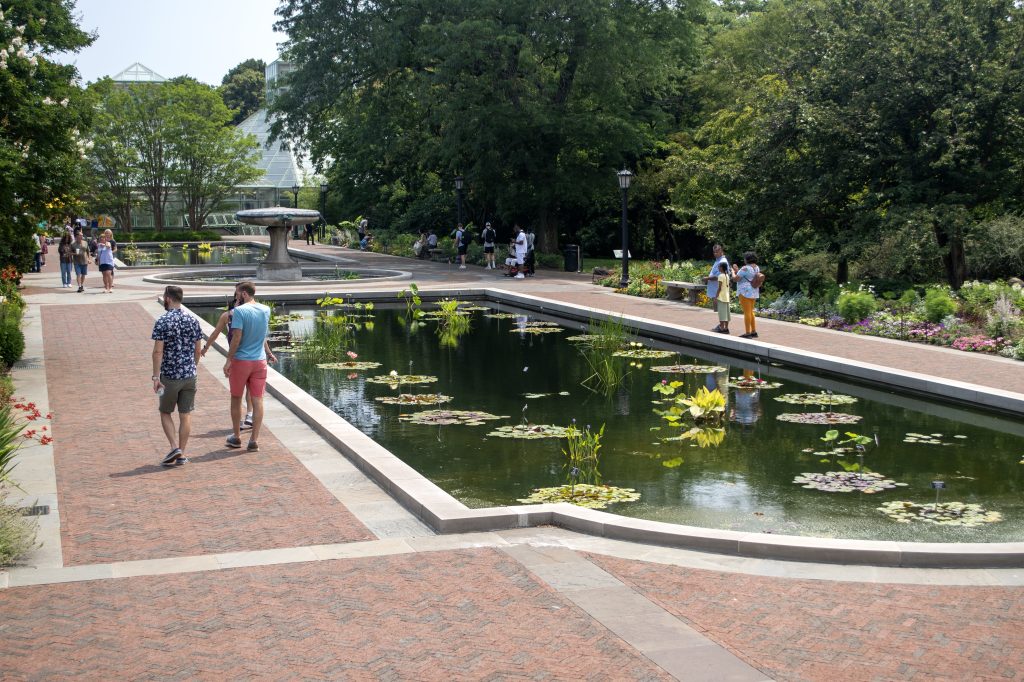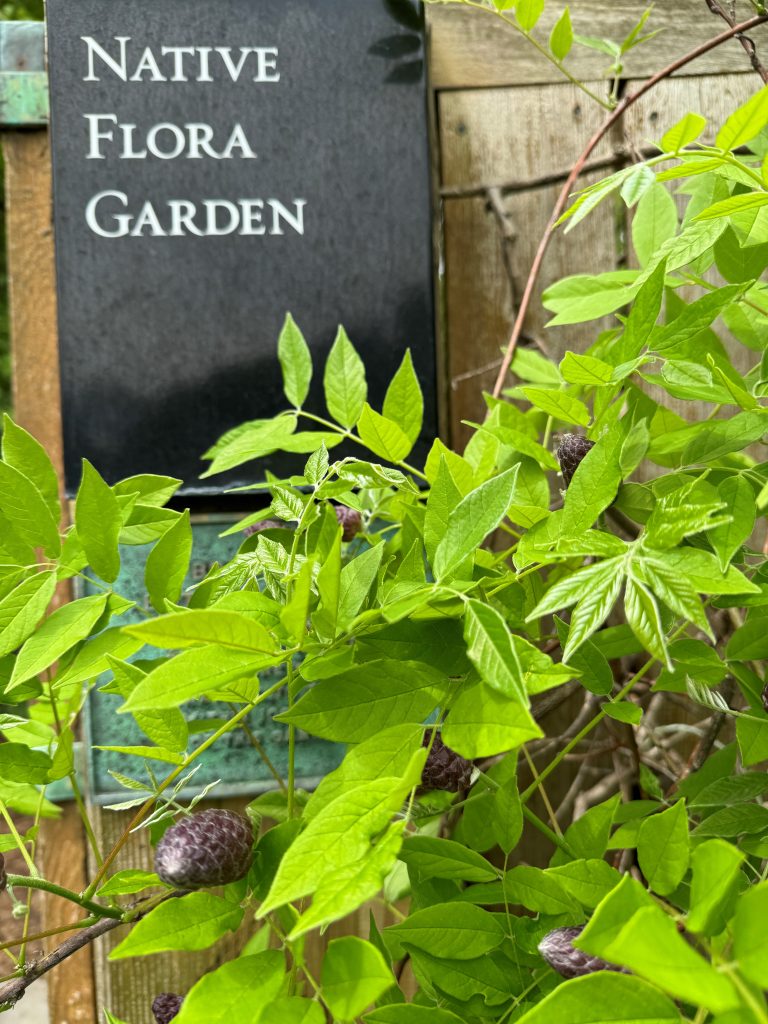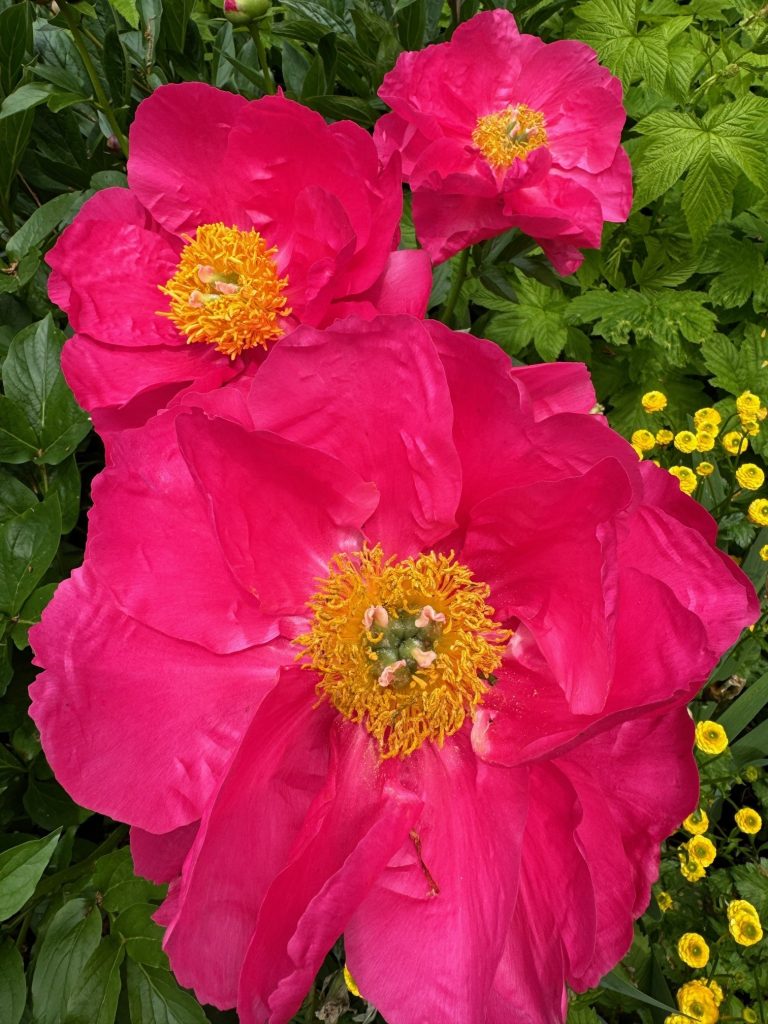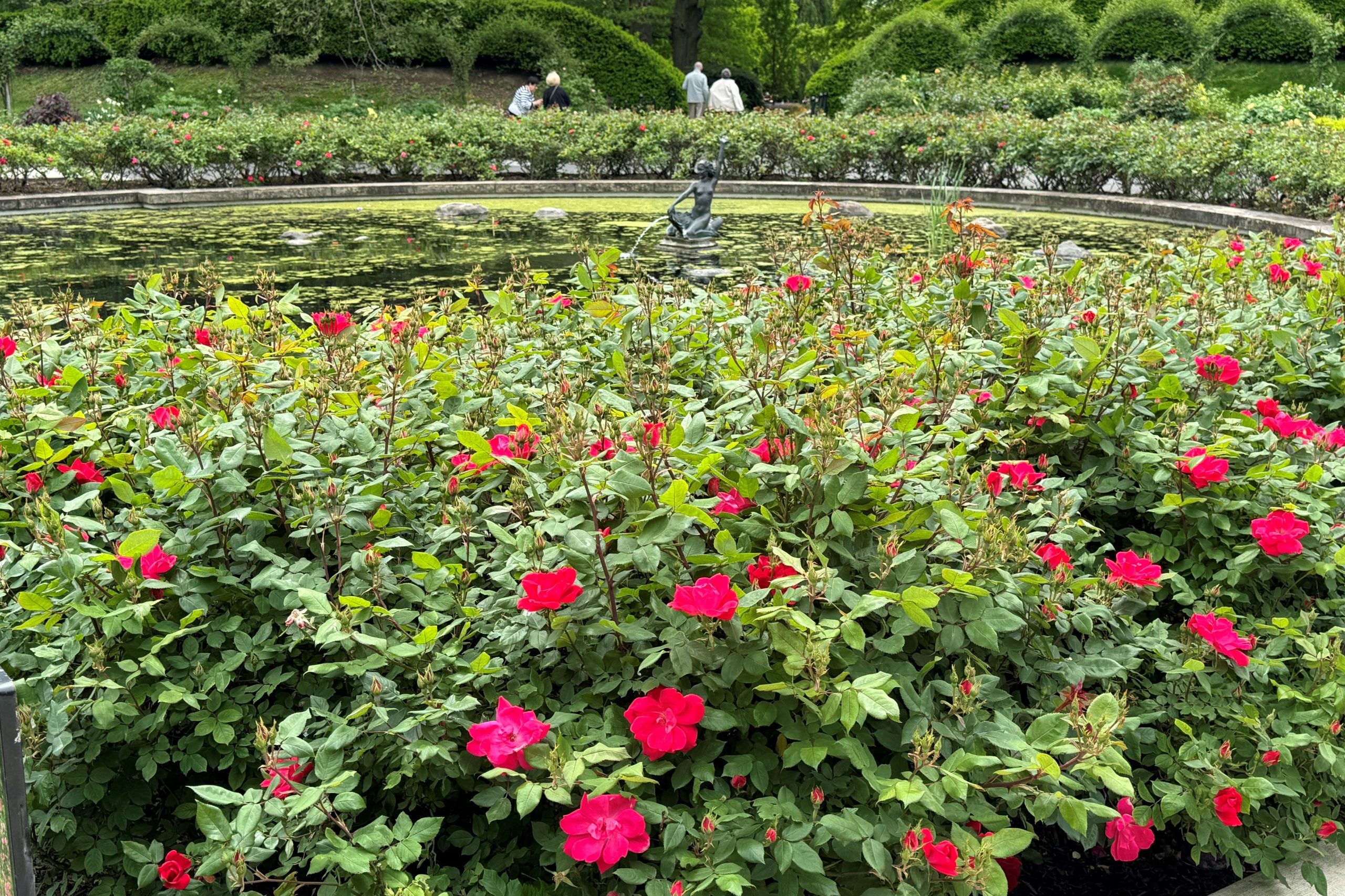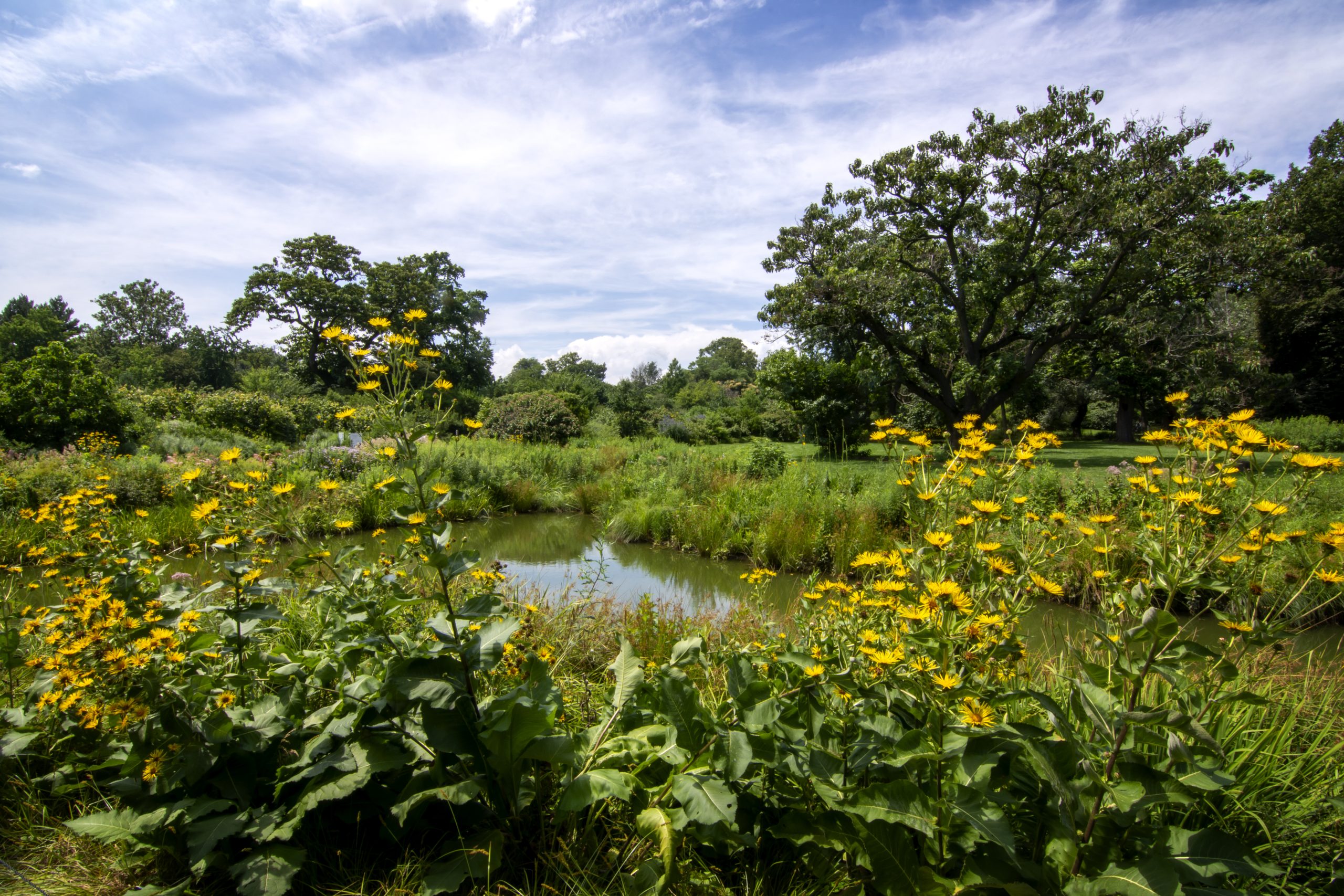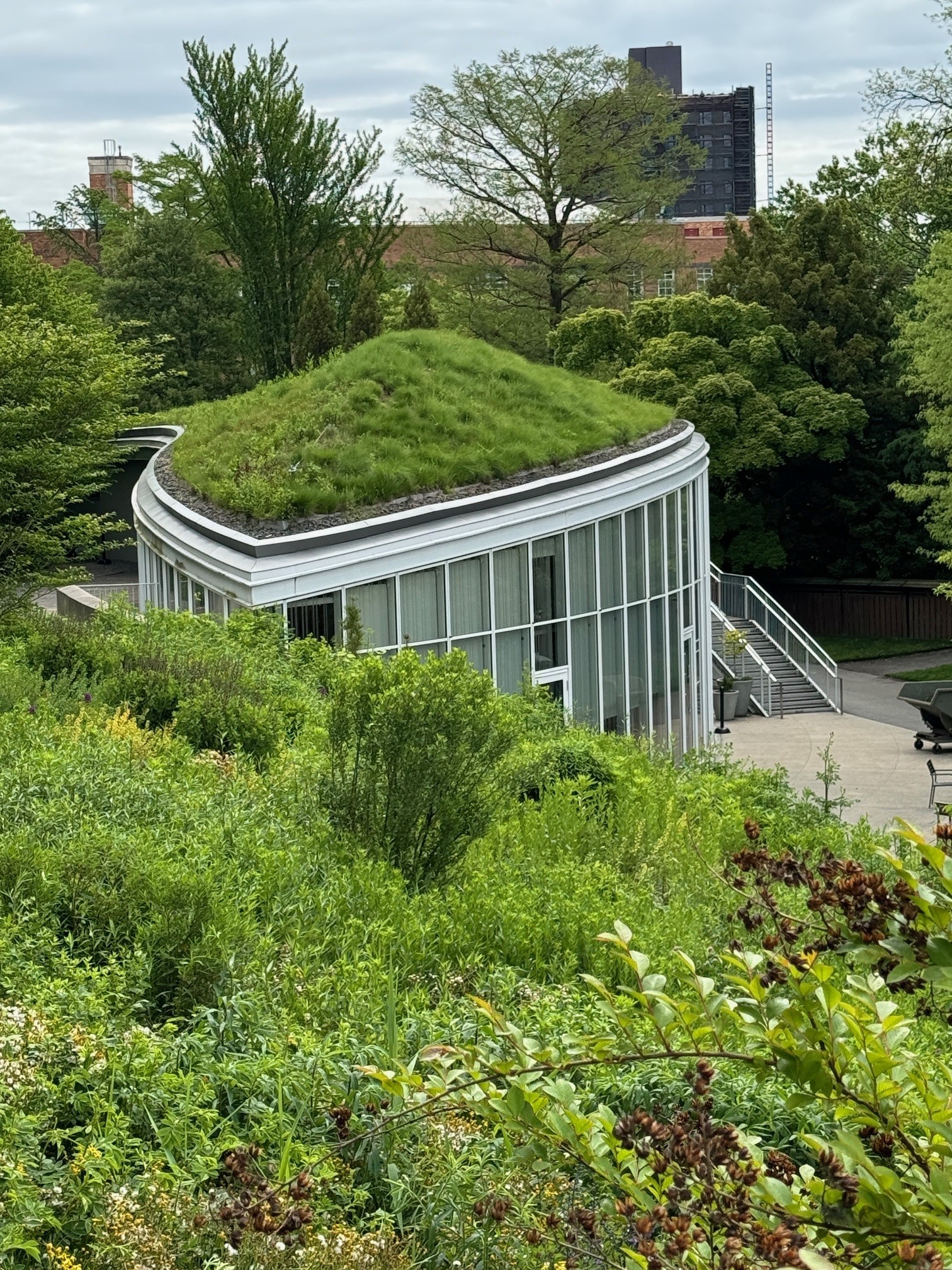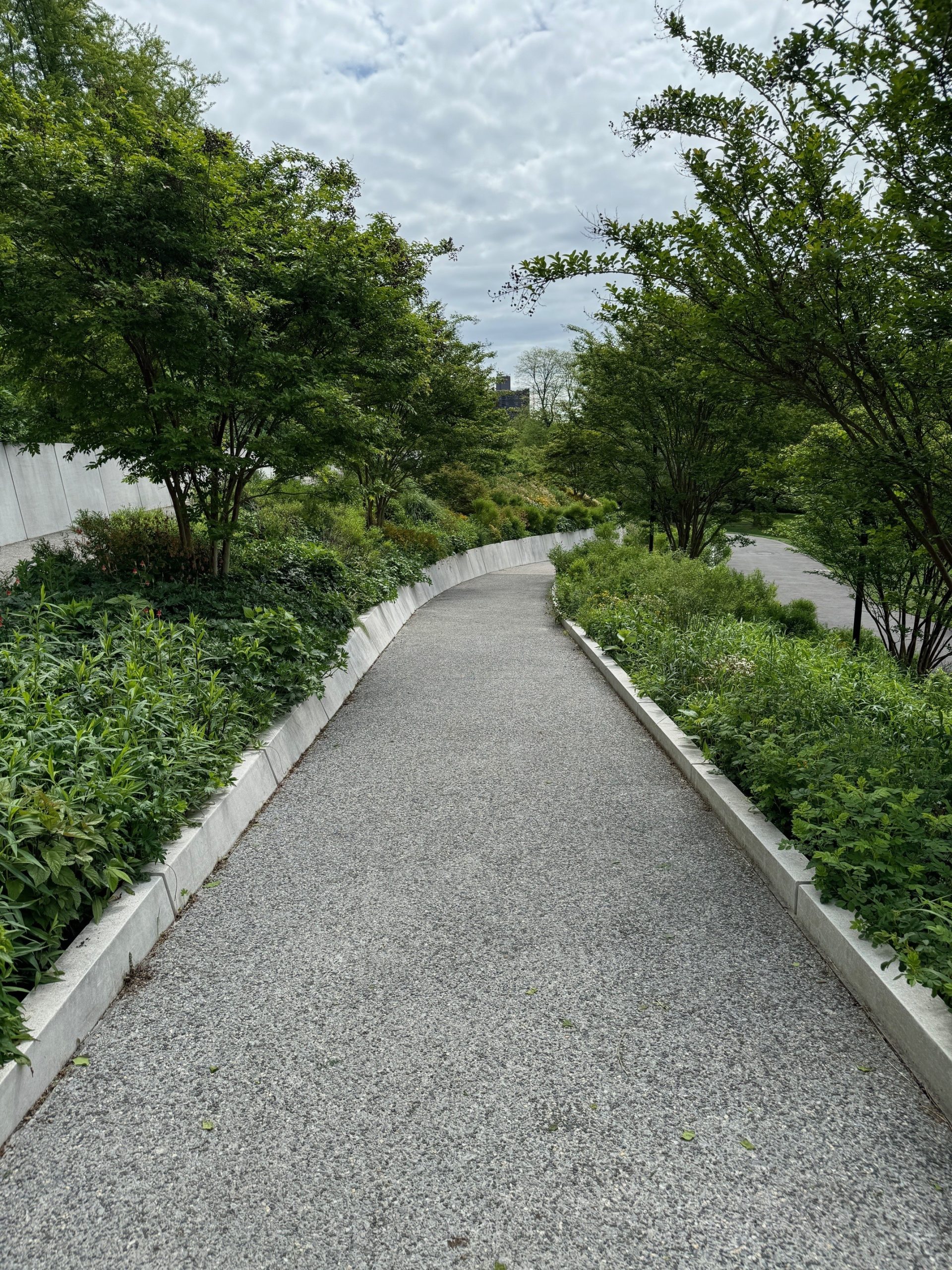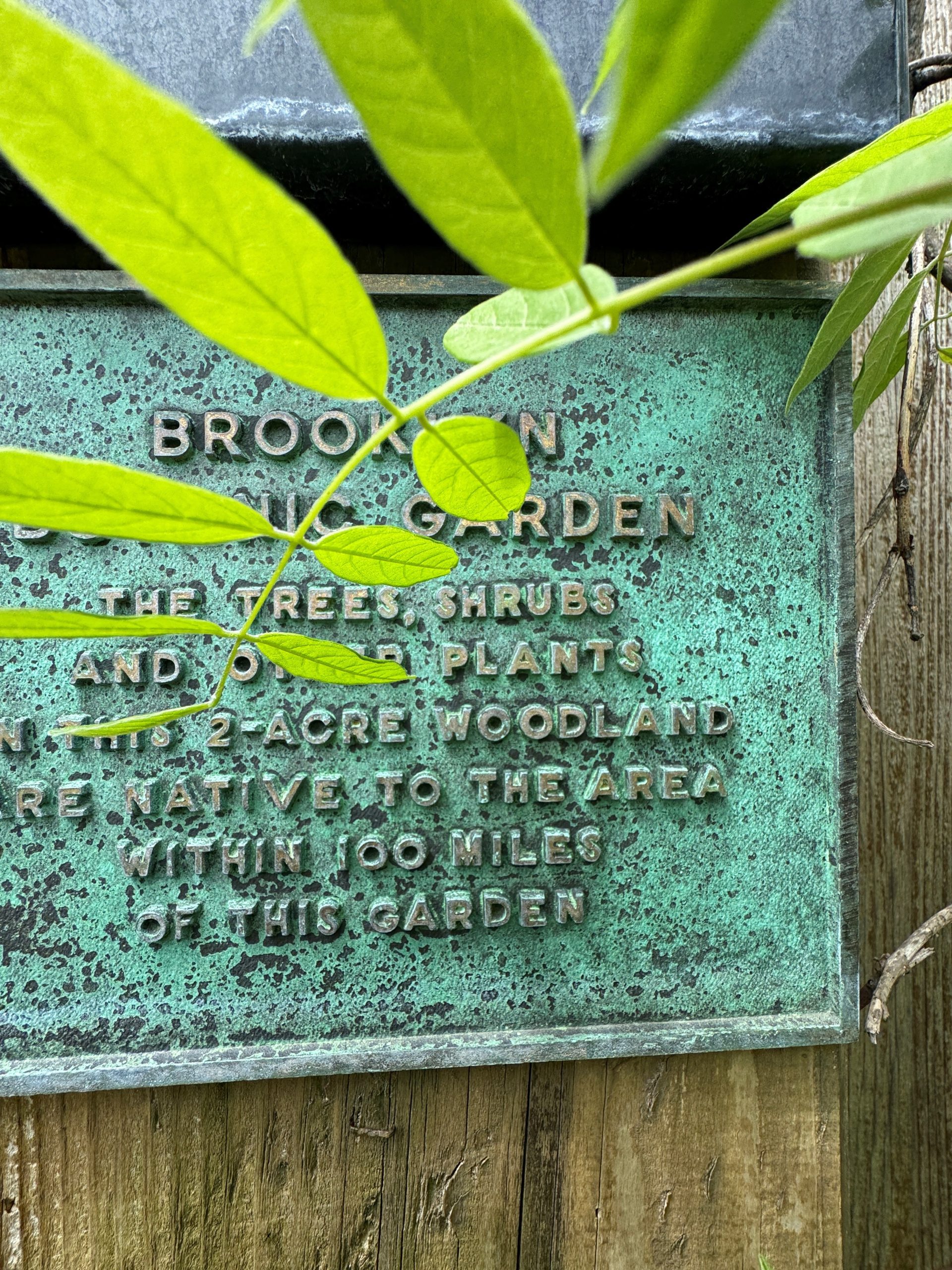For over 100 years, Brooklyn Botanic Garden (BBG) has been a jewel, an oasis, a place of learning and teaching, a place for birds and pollinators, people and plants. You can never imagine such a place of beauty hidden in plain sight, a stone’s throw from the Brooklyn Museum. With 15 different gardens, six conservatories, collections, and art exhibitions, BBG is a cultural treasure that is as progressive and trend-setting today as it was when it was started.
Its mission statement states that the Brooklyn Botanic Garden is an urban botanic garden that connects people to the world of plants, fostering delight and curiosity while inspiring an appreciation and sense of stewardship of the environment.
It is indeed all of this and yet so much more. The garden’s history embodies the work and accomplishments of native New Yorkers and integrates New York history into the gifts the garden has received throughout the years ranging from the original herb garden to the 500-year old Shogun lantern. The buildings and landscape are historic and contemporary at the same time. Open year-round, BBG serves communities in New York City but is recognized also internationally through its world-class gardens, extensive research collections, and numerous educational and community programs.
In 1910, the garden was laid out with 39 acres (today it is 52 acres) by the Olmstead Brothers’ firm. One year later the BBG presented its first display garden: a native flora garden as a way to conserve and showcase native plants. It was composed of wildflower beds arranged systematically by plant family and evolutionary relationship.
The BBG’s choice to start with native plants was as groundbreaking then as it is today. Planting with native plants is one of the most important and influential trends in gardening as native plants are seen as helping to combat bad climate and soil conditions. These important plant species provide nectar, pollen, and seeds that serve as food for native butterflies, insects, birds and other animals. BBG was certainly ahead of its time.
Stretched out over 52 acres, the BBG has 15 different gardens, including the Cherry Esplanade, the Discovery Garden, the Fragrance Garden, the Herb Garden, the Japanese Hill and Pond Garden, the Lily Pool Terrace and Borders, Native Flora Garden, the Osborne Garden, Overlook, Plant Family Collection, Rock Garden, Rose Garden, Shakespeare Garden, Water Garden, and Woodland Garden. Each of these gardens is like a private world unto itself where you can spend hours observing the birds and pollinators, the shape of the gardens, the terraces, and absorbing the fragrances.
Each season, the website of BBG lists the top plants in bloom so you can plan your trip accordingly. As of this writing, it is peak time to visit the Cranford Rose Garden. One of the largest collections in North America, thousands of rosebushes are cultivated there, including wild species, old garden roses, hybrid teas, grandifloras, floribundas, polyanthas, hybrid perpetuals, climbers, ramblers, and miniatures. Other plantings shine throughout the summer, and a second flush of roses occurs in September.
The BBG was the first botanic garden in the U.S. to create a children’s garden. In 1914, they created a one-acre vegetable garden where city children could grow their own food plants. Still to this day, nearly 1,000 children from 2 to 18 years old register for programs, where they prepare, plant, weed, and harvest this one-acre plot of land. Also, the Discovery Garden is planned for children where they can run through winding paths to meadows of tall native grasses and flowers that attract butterflies, hummingbirds, and bees. Raised boardwalks and platforms allow children to get up close to leafy tree canopies in the woodland.
In the following years, the other gardens were established one after the other, including a large rose garden, the Japanese Hill and Pond, the Rose Garden, the Rock Garden and even a Shakespeare Garden donated by Henry Clay Folger, the founder of the Folger Shakespeare Library in Washington D.C. More than 80 kinds of plants mentioned in the works of William Shakespeare grow in this English cottage–style garden. Many are labeled with the common or Shakespearean name, the botanical name, a relevant quotation from a poem or play by the Bard, and a graphic illustration of the plant.
Each visitor usually finds his or her favorite spot and favorite garden or collection. Even those people with disabilities are not left out. In another first, the intimate Alice Recknagel Ireys Fragrance Garden was designed to bring people in close contact with plants to stimulate the senses of smell and touch. Created in 1955, it was the first garden in the country designed to accommodate people with visual impairments, through its multisensory approach that appeals to all visitors, particularly children. Visitors are encouraged to touch and smell the plants. Braille labels identify the specimens, which grow in raised beds at just the right height for children and for people in wheelchairs. Garden beds are arranged by theme: plants with scented leaves, plants for touch, fragrant flowers, and kitchen herbs.
The BBG also calls some of the content of its gardens, “notable collections.” These include
the bluebell wood, which is home to more than 40,000 Spanish bluebells (Hyacinthoides hispanica ‘Excelsior’), which burst into spectacular bloom in May.
The flowering cherry collection of over 200 trees which bloom usually from late March through early May.
Daffodil hill which heralds spring when it is covered with thousands of blooming trumpet daffodils in late March and early April.
The lilac collection, first planted in 1916, showcases nearly 150 lilac species and cultivars in late April and May.
Magnolia plaza which is a blizzard of white, ivory, yellow, pink, and purple blooms from March through April.
The C.V. Starr bonsai museum which displays the Garden’s famous bonsai collection—one of the oldest in the country.
The tree peony collection consists which primarily of Paeonia suffruticosa specimens given to BBG after the events of September 11, 2001, by the Japanese town of Yatsuka-Cho. It blooms from late April into May.
The water-lily collection, which includes 60 varieties of hardy and tropical water-lilies and sacred lotuses, blooms from June to August.
The Alfred T. White memorial is paved with stones inscribed with the names of famous Brooklynites past and present.
The Robert W. Wilson aquatic house features a rotating selection from BBG’s renowned collection of over 6,000 orchids.
Horticulturalists are delighted with the BBG as there is so much on offer and the plants are varied and sophisticated. The extraordinary depth and breadth of the BBG’s plant life includes a living collection of over 18,500 living accessions; at-risk globally rare species in collection number at least 380. At-risk native rare species in the collection include over 100 types; also, there are at least 1,500 in the collection that are protected from illegal trade. In 1977, the BBG applied for and received a patent for Magnolia × ‘Elizabeth’, the first yellow magnolia. Finally, the garden buys approximately 1,000 new plants each year. Ellen Petersen, a board member and head of the horticulture committee, delights in the garden’s extraordinary diversity. She explained, “BBG is a beautiful place, full of magnificent, beautifully grown plants. Botanic Gardens have important scientific and ecological roles to fill, but most people come here for beauty, joy and, in hard times, solace.”
The educational and outreach programs at BBG are vast and deep. The garden’s programming reaches children of all ages, as well as parents, teachers, and other caregivers, through classes, workshops, youth development programs, supplementary science in-school programs, internship opportunities, summer programs, and city-wide and regional teacher training. Each year, BBG serves 250,000 students and children. There are 130,000 children participating in STEM education programs; they train over 1,500 teachers each year; they enroll over 2,000 Brooklyn residents in a Community Greening Program and donate 50,000 plants to 10,000 community groups.
Founded in 2004, the nine-month garden apprentice program (GAP) internship is provided to nearly 60 high school students annually from throughout New York City. This is an opportunity for personal growth and career development through a four-tier program focused on gardening, environmental issues, science, leadership, and career skills.
In 2014, in recognition of BBG’s pioneering work in youth environmental education and other community initiatives, Brooklyn Botanic Garden received the National Medal for Museum and Library Service from the Institute of Museum and Library Services, in Washington, DC, the nation’s highest honor bestowed on museums and libraries for service to the community.
Sustainability is the name of the game in so many areas of the garden. There is a home composting exhibit presents options for recycling garden and kitchen waste in urban gardens of all sizes, including homemade and commercially available wooden and recycled plastic compost bins. The beautiful new LEEDS-certified visitor center with a green roof and windows with frosted stripes that prevents birds from running into the windows and dying. Several water gardens and streams manage the overflow of water during the increasingly prevalent rainstorms. A gift shop and a delightful cafeteria round out what is a very enjoyable, relaxing and fulfilling visit to this cultural jewel.
The volunteer program that assists and supports the full-time staff (210) and seasonal workers (140) includes over 700 volunteers who put in over 80,000 hours of service each year.
With over 18,500 kinds of plants and 800,000 visitors each year to this extraordinary historic garden in the center of Brooklyn, the BBG is proud to say that it presents the very best in urban gardening and horticulture display. It is a place of community and outreach and ties people together through their volunteering and utter enjoyment of the garden.
By Victoria Larson, publisher of Side of Culture
Top Photo: A border of annual flowers at the Brooklyn Botanic Garden by Seanchee

